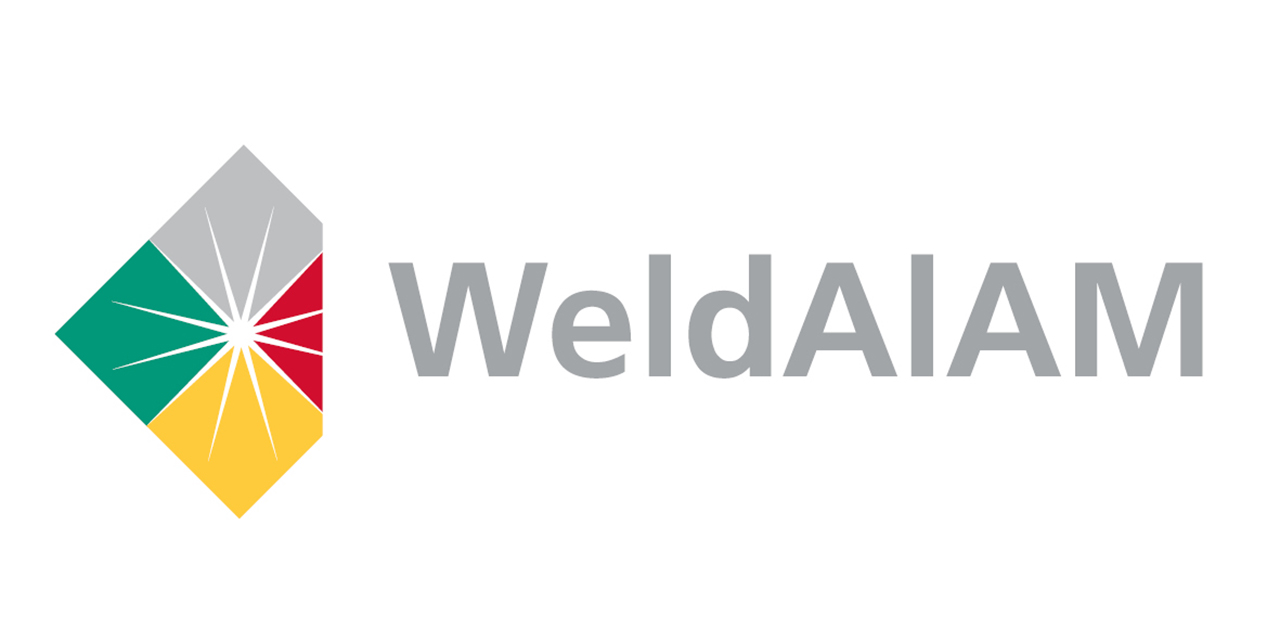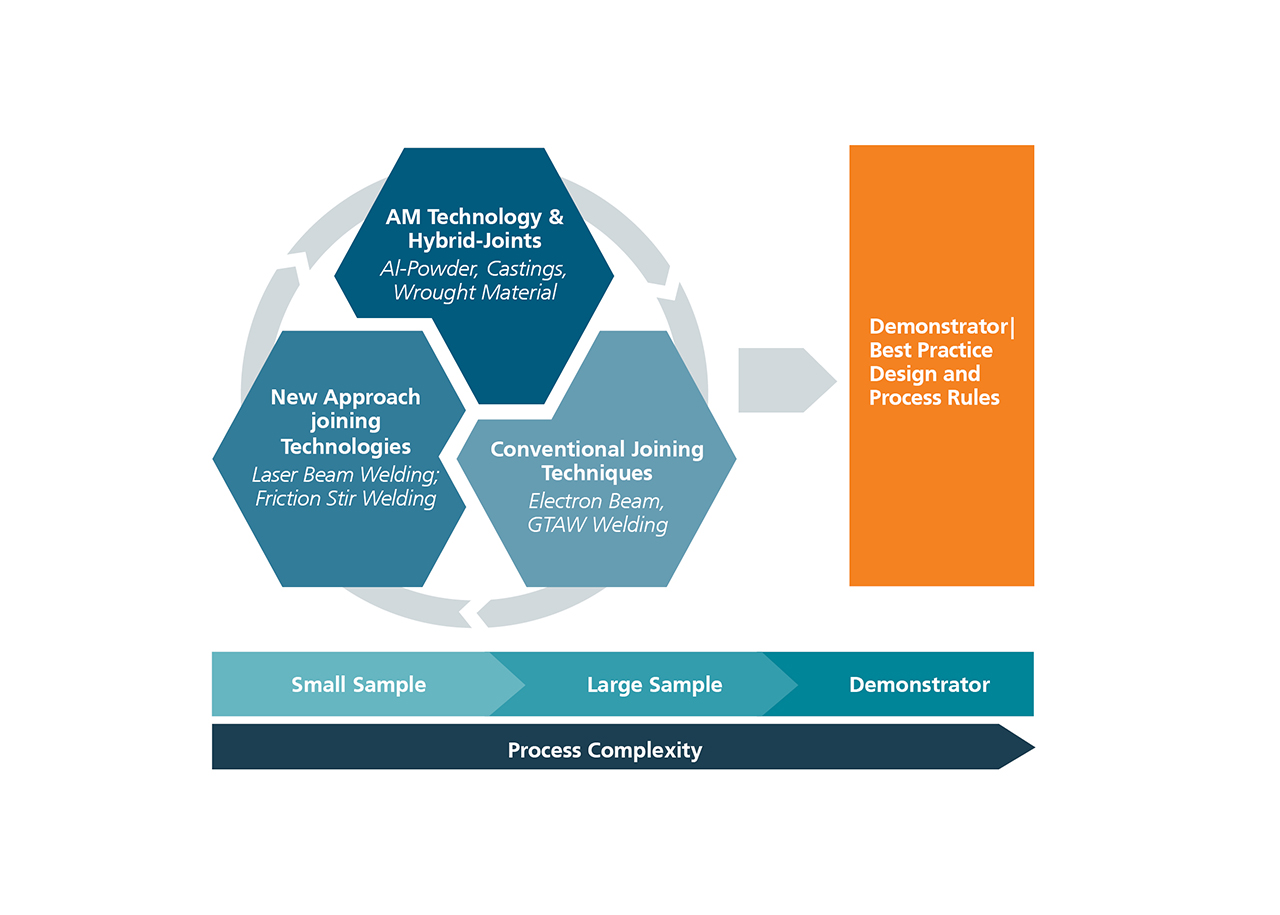Welding Solutions for Aluminium Additive Manufactured Light Weight Components (WeldAlAM)
Motivation
One of the main cost drivers of today’s lightweight application for automotive or aeronautic components are costs for raw material independent of the manufacturing routes. Complex component designs and large size parts require long lead times and the need of large production infrastructure. With respect to additive manufacturing (AM) of large aluminium parts it becomes increasingly challenging to ensure homogeneous material quality at affordable costs. They can currently not compete with the high and repeatable material quality and low cost structure of semi-finished products such as extrusions and sheets.
Approach and Goals
AM technology to produce smaller parts and to combine these with semi-finished components offers great potential to overcome the above addressed requirements and high costs for large parts. It opens the opportunity to define interfaces to connect these parts with semi-finished products by industrial well-established joining technologies, such as gas tungsten arc welding (GTAW) or laser beam welding (LBW).
The focus of the WeldAlAM project will be on evaluating weldability of high strength aluminium AM parts and consequently validating different welding technologies. The approach will follow a lab-based level to explore process principles and followed by a mock-up phase for two relevant components selected together with the User Committee.
EB welding represent reference for beam welding and GTAW is intended as basis for conventional arc welding technologies. LBW and friction stir welding will be developed to overcome porosity and weldability problems. The investigation will be covered by non-destructive testing as well as metallographic characterization of the AM parts and weld seams. Additionally surface treatments and corrosion test are planned to qualify the parts for future lightweight applications. SME will benefit from establishing “good practice rules” for different industry sectors, furthermore SME profit from the research regarding surface treated aluminium parts.
 Fraunhofer Institute for Material and Beam Technology IWS
Fraunhofer Institute for Material and Beam Technology IWS
